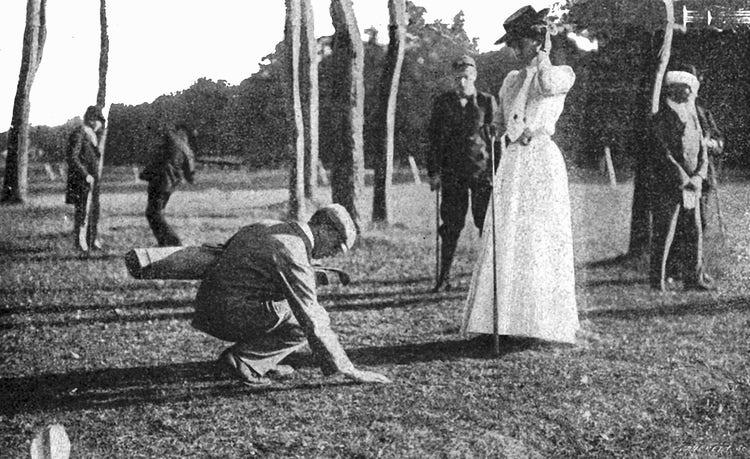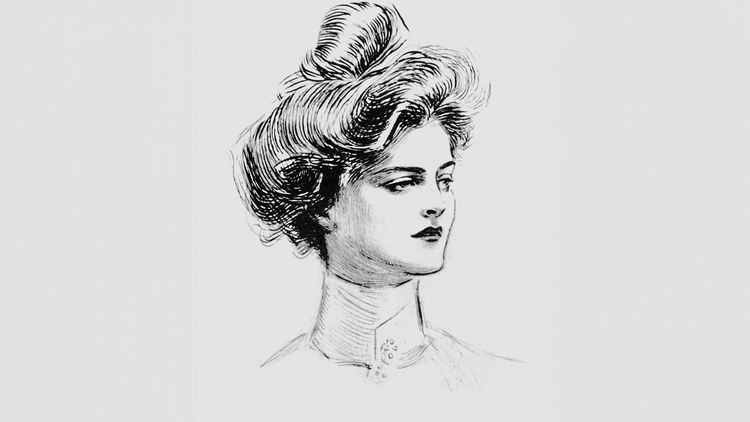
Olympic rewind: Unlocking the medal mystery of the first women’s Olympic golf competition
Led by Margaret Ives Abbott, Americans swept the podium in Paris 1900
When the Olympic Games were held in Paris in 1900 there was no extravagant opening or closing ceremonies. No boats filled with athletes floating down the Seine. No magical moment with the Celine Dion of the day singing Edith Piaf’s “Hymn to Love” on the Eiffel Tower. No ceremonies at all, in fact.
The Games were held that year in conjunction with the Paris Exposition, a world’s fair that attracted more than 50 million visitors and overshadowed what has grown into the biggest sporting event around the globe. It wasn’t even called the Olympics in 1900. The official title was the “concours internationaux d’exercices physiques et de sports,” which means “international physical exercises and sports competition.”
According to the International Olympic Committee, 1226 athletes from 26 countries competed in 95 medal events – with pigeon racing and tug-of-war contested along with more traditional sports like track and field and swimming – in Paris. Many of the athletes left the City of Lights not knowing they had ever competed in the Olympic Games, though.
One of those was Margaret Ives Abbott, who became America’s first female Olympic champion when she won the golf competition. She was one of 22 women competing in five sports – golf, tennis, equestrian, croquet and sailing – that year.
Abbott’s accomplishment might never have come to light, though, without an exhaustive and decade-long search by Dr. Paula Welch, a professor emeritus at the University of Florida with considerable ties to the Olympic movement.
Welch first saw Abbott’s name on a plaque at the headquarters of the United States Olympic & Paralympic Committee in New York. She’d done her doctoral dissertation on American women in the Olympics and had never heard of her. She couldn’t find anyone else who had, either. So she was intrigued.
“I just felt like this was such an interesting story,” Welch said in an article on the USOPC Museum website. “I wanted to find out as much as I could.”
Her search was conducted in the days before Google and the Internet. Welch went through actual newspapers, generally collecting news from society pages because the sports section didn’t cover female athletes. She wrote letters and made phone calls. She even ordered Abbott’s birth certificate.
Slowly, Welch pieced things together and knew it was a story that needed to be told.

CREDIT: (Courtesy USGA Museum)
“Although she didn't think about it at the time, she was a pathfinder and she was a pioneer,” Welch said in a video tribute when Abbott was inducted posthumously into the Illinois Golf Hall of Fame. “And I also think that she may have been a role model.
“Society columns were a really early harbinger of women's sports and daily accounts of women in various activities, especially golf in the 1900s – as well as tennis – may have inspired other women to take up golf.”
Abbott, whose father was a well-to-do American merchant, was born in Calcutta (now known at Kolkata), India. Her father died a year after his daughter was born, and the family returned to the United States, first settling in Boston and then moving to Chicago.
She learned to play golf at Chicago Golf Club under the watchful eye of one of the country’s preeminent amateurs and golf course designers, C.B. MacDonald, a member of the World Golf Hall of Fame, and H.J. Whigham, Scottish writing and amateur golfer. By the end of the summer of 1897, she had a 19 handicap and was scratch a year later.
Her grandson, the late Dr. Peter Dunne, remembered playing with Abbott in the video made for her Illinois Golf Hall of Fame induction.
“She had this very slow backswing,” Dunne said. “I can just see her very slow backswing then plump. And she was deadly accurate, and I would outdrive her by a hundred yards, but I'd be over here or over there. And she was boom, boom, boom. And I wasn't smart enough to figure out, maybe you should improve your short game buster and get a little more accuracy. But I was very proud of her. And I would tell my friends, ‘Oh, Marta beat me again.’ She really was a good golfer.”
In 1899, Abbott and her mother Mary moved to Paris where Mary, a writer and literary reviewer, wrote a travel guide and Margaret studied art with Auguste Rodin and Edgar Degas. Margaret saw a newspaper article about an international golf competition that was going to be held about an hour north of Paris at the Compiegne Club, which was built in 1896 and was one of just 25 courses in France in 1900. The course, designed by M.W. Freemantle, was built within the horse racing track of Compiegne. The two women decided to enter; no mother and daughter have since competed in the same event at an Olympics.
The women’s competition was nine holes of stroke play, held Oct. 3, 1900, the day after the men’s 36-hole, stroke-play competition. Margaret shot 47 and led a U.S. sweep, with Pauline Whittier taking the silver, two strokes off the pace, and Daria Pratt the bronze. Her mother finished in a tie for seventh, shooting 65. There were no medals, though, Margaret received a Saxon porcelain bowl mounted in gold.
In 1902, Abbott married Finley Peter Dunne, a syndicated satirical columnist, and raised four children, one of whom – Philip Dunne – became a well-known screenwriter, director and producer. Among the wedding congratulations was one from Sir Arthur Conan Doyle, who wrote the Sherlock Holmes novels.
Abbott died in 1955 and never knew of her brush with Olympic glory. But Welch wrote Phillip Dunne a letter after she got his address from his alma mater, Harvard. He sent her his phone number and she was able to deliver the “news,” albeit belatedly.
“It’s not every day that you learn your mother was an Olympic champion, 80-odd years after the fact,” Philip Dunne wrote in a 1984 Golf Digest article. “The champion herself had told us only that she had won the golf championship of Paris.”